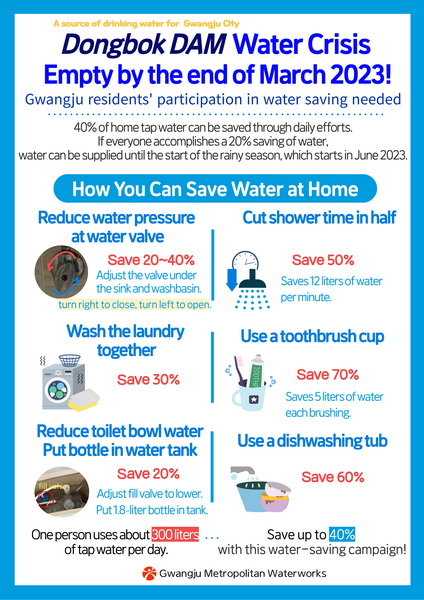How to Be a Rainmaker
By Chung Hyunhwa
No Water, No Life
It is said to take only three days for a person to lose one’s life without water, compared to 1–2 months without food, so there are a lot of disaster movies that describe the struggles to get water from scratch. In All Is Lost (2013) with Robert Redford, condensed water is collected by using a plastic bag because the protagonist was drifting in an emergency boat in a wide ocean alone. In Cast Away (2000) with Tom Hanks, rain or dew on leaves are collected when there were no fresh water sources on a remote, uninhabited island. In The Martian (2015) with Matt Damon, this stranded astronaut risks an explosion to get water through a chemical reaction using rocket fuel, or hydrazine.
In the 1970s and early 1980s in small towns in Korea, there were metal hand pumps in one corner of most homes to use ground water. The water would taste a little rusty in the beginning of pumping because the pumps were made of iron. In a small country village such as the one where my grandfather lived, there would be only one well in the middle, and all the village people would come to get water there. The water tasted sweet, but it needed to be carried home by someone. If we go back just four decades, getting water meant investing much more effort and time.
The Worst Drought in 50 Years
Now water seems to be all around and not as precious. It is difficult to feel like we are having a water shortage. However, the southern part of Korea is experiencing the most serious drought in 50 years, caused by insufficient rainfall in the summer that was as low as half that of other years. It is ironic that there was a disastrous flood in Seoul the very same summer. At this rate, there is the possibility of limiting the water supply in February. The last time this happened in Gwangju was in 1992. Some islands along the south coast are already experiencing a severe water crisis. Nohwado Island is known to receive water only one day a week.
Gwangju depends on four reservoirs for its water supply: Lake Juam, Lake Dongbok, Reservoir 2 and Reservoir 4. Out of these four, Lake Juam and Lake Dongbok are actually supplying most of the water to the city. However, in November 2022, the two lakes were only about 30 percent full, which is half of the average water reserve. At this speed, Lake Dongbok will dry up by late March in 2023, and Lake Juam in mid-May, according to Gwangju City. The city is looking for ways to secure other water sources, like possibly the Yeongsan River and by drilling for ground water, but the easiest way is every citizen’s effort to cut down on water usage by 20 percent. A person uses an average of 300 liters of water each day, and if we follow these action points, it is possible to save up to even 40 percent of that amount. This will allow us to survive through this drought with the limited water reserve until we have rain in June again.
Water Problems and the Climate Crisis
Scientists predict that in the future there will be more rain overall, and extreme torrential rains will occur more often. However, there will be more areas affected by droughts as well. This means it will not rain evenly on the globe. According to studies, every one degree Celsius increase in the temperature causes seven percent more water vapor in the atmosphere. More water vapor in the atmosphere means more energy supply to storms, so they will become more powerful. In the meantime, the land will lose more moisture because of the higher temperature, causing plants to dry. The decrease in green spaces attributes to the drought on land again. The hard, dry land will not absorb water to save for later, so the rainwater will go down to the rivers and the oceans too quickly, creating more floods, too. In other words, a vicious cycle of moisture distribution is being created. For quite a while, Korea seemed safe from water shortage, but it looks like we need preparation for the bipolar climate era.
In the long run, there should be more effort to reuse water or utilize rainwater more efficiently. Supplying tap water requires energy, so saving water means saving energy, too. I already put bottles into my toilet tanks, but while writing this, I decided to prepare a big water bucket to store reusable water for my plants or the toilet. I know this may not help to make your home most stylish, and it will take up more room, but later it will also help us to keep from wishing we were able to control going to the bathroom just every other day. Being mindful ahead of time is wisdom.
How to Be a Rainmaker
Saving water is the same as making rain. Below are suggestions from Gwangju City government that will allow us all to become rainmakers by saving water.

The Author
Chung Hyun-hwa is from Gwangju and led Gwangju Hikers, an international eco-hike group at the GIC. She would like to participate in being a voice on climate crisis issues. Currently, she is working in the horticulture field and has a love for plants. Previously, she taught English at Yantai American School and Yantai Korean School in China, and in recent years, she has worked for Branksome Hall Asia and the Jeju school administration. She received her master’s degree in TESOL from The College of New Jersey in the U.S.







